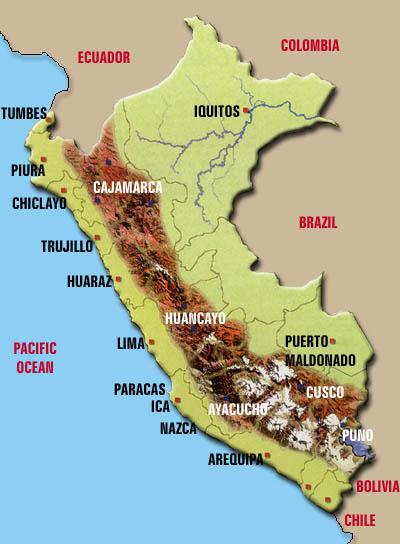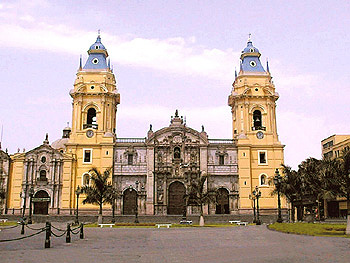
With a total estimated population of 24 million, Peru is the fourth most pupulated country in South America. Only 30% of Peruvians live in rural areas, while some 70% reside in urban areas. One-third of the Peruvian work force is based in Lima and its vicinity. Peru's most populous cities outside of Metropolitan Lima include Arequipa (800,000), Trujillo (500,000) Chiclayo (400,000) and Cuzco (300,000).
When the Spanish landed in 1531, Peru was the nucleus of a highly developed Incan civilizaton. Centered at Cuzco, the Incan empire extended over a vast region from what is now northern Ecuador to central Chile. In search of Incan wealth, the Spanish explorer Francisco Pizarro arrived in the territory after the Incas had fought a debilitating civil war and easily conquered the weakened people.
Jose de San Martin of Argentina and Simon Bolivar of Venezuela led Peru's independence movement, which culminated with a declaration of independence from Spain on July 28, 1821. In December 1824, Gen.Antonio Jose de Sucre defeated the Spanish troops at Ayacucho, ending Spanish rule in South America. Following attempts to regain its former colonies, Spain ultimately recognized Peru's independence in 1879.
By Karl Bieberach--our good friend...
In a spontaneous movement toward urbanization by the nation's populance, Lima has grown tremendously over the last few years. Census figures put the city's current population at 7,200,000 persons, although unofficial estimates place the figure above 8 million at present.
Lima is served by the Jorge Chavez International Airport. located approximately 45 minutes (20miles) from the MIraflores District, where the JW Marriott Hotel is situated. International service to Lima is provided by 22 airlines, includinf 5 of Europe's most important carriers (Alitalia, AIr France, Lufthansa, KLM and Iberia). Regular service to Lima from the USA is provided by a number of US and Latin American carriers, including frequent daily non-stops from Miami, New York/Newark, Dallas, Atlanta and Houston.
